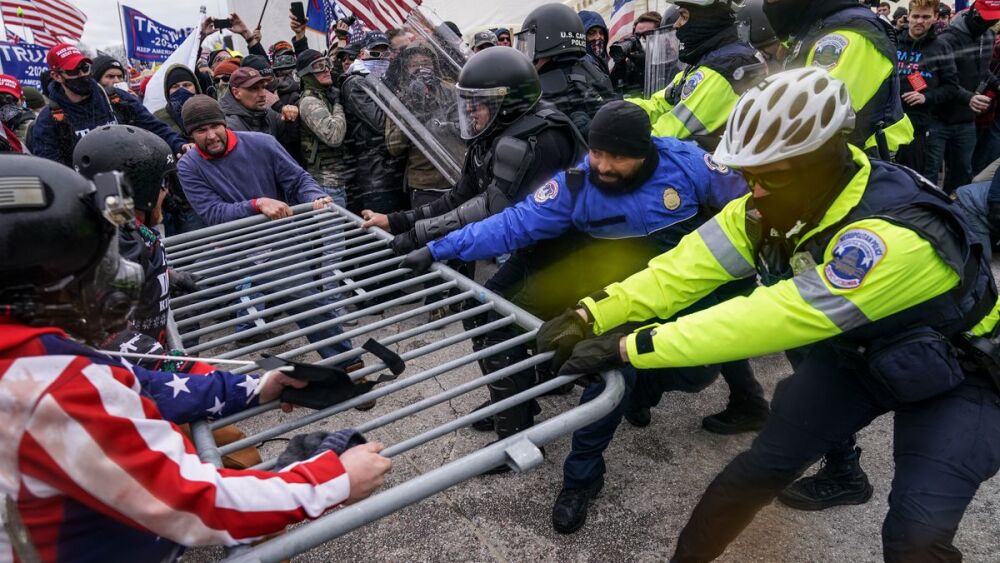It was reported on Jan. 14 that police had arrested a man suspected of being the person who threw a fire extinguisher that struck three Capitol Police officers in the head during the attack on the Capitol on Jan. 6. He was identified as Robert Sanford, a retired firefighter from Chester, Pennsylvania.
I could write about how the arrest of this man discredits all firefighters. Indeed, I have already written that column more than once. But today I want to talk about the other guy.
The rumor mill flash point
When videos of the events were first made public, people noticed right away that the man with the fire extinguisher wore a cap with the letters CFD on it. The immediate assumption was that he must be a firefighter, perhaps a Chicago firefighter.
Never mind that dozens of other fire departments have the initials CFD. Forget about the fact that other, non-fire organizations could go by this abbreviation as well. And of course, just because you are wearing a hat from a fire department does not automatically mean that you are or were a member of that organization.
The prudent thing to do, of course, was wait. Do the work. Let the investigations happen. Let law enforcement do its job.
But social media waits for no one.
Almost immediately, people were speculating online about the identity of the man who threw the fire extinguisher. And very quickly, a man’s identity was shared on social media as the possible assailant. He was a retired Chicago firefighter who, in some photos, had a beard similar to the one visible in the video. Immediately people began speculating about the man’s possible motives in committing such a crime.
But it wasn’t him.
People who actually knew this man knew that he had shaved his beard a month ago. Further, he had spent Jan. 6 grocery shopping and cooking a birthday dinner for his wife.
Not a fan of social media, the man was initially unaware that his name was being linked to violence in Washington, DC.
But he soon found out.
He was being mentioned by name in social media posts calling him a criminal, a traitor and worse. His own own son is a police officer. As he told the media, the events really messed up his life (he used a stronger word).
Stop the spread
Could this outcome have been avoided? Perhaps not entirely, given the reality of social media. But if any firefighter or other first responder perpetrated this false accusation in any way, they should feel genuine shame – and never, never do such a thing again.
It also would have helped if every firefighter, instead of simply passing the rumor along, had stood up (as some did) and questioned assumptions from dubious sources. This is simple to do and should always be done. When someone shares a rumor, a story, a supposed fact with you, ask for a source. You don’t have to be confrontational about it. You can even say something simple like, “That’s interesting. I’d like to read more about that. Where did you see that?”
Then follow up. If the source is doubtful or nonexistent, stop the story in its tracks. Tell the person who told you about it what you have learned.
One of the biggest problems with social media is that there is much less accountability compared to media publishers or saying something in person. People can say just about anything on social media without direct repercussions. And like a fire, social media can create its own weather, seeming to verify unsubstantiated information just by repeating it over and over.
But all of this has real consequences. Just ask that guy in Illinois. Social media is forever. His name will be forever linked to the criminal events in Washington, D.C., on Jan. 6, even though he was just having dinner with his family that day.



